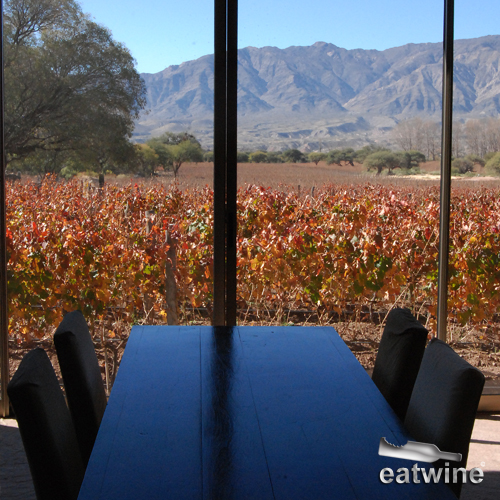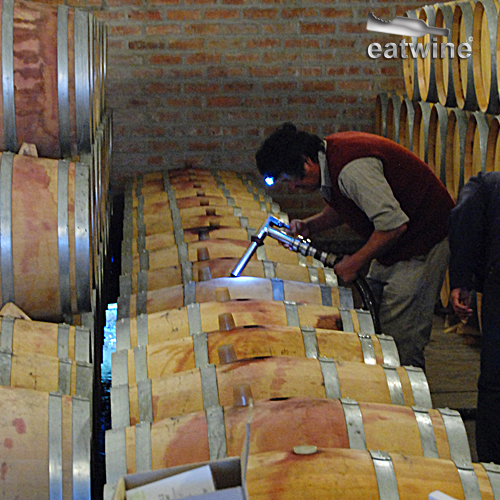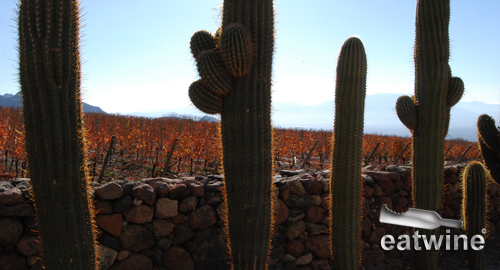I spent much of last week traveling in vast, northwestern Argentina in the region of Salta. Amid beguiling landscapes, I saw the vegetation-dense hills outside Salta (city), the high altiplano plains of Cachi and experienced the constant backdrop of the Andes, at times covered with cacti and wild donkeys grazing. More on that in another (picture) post. What we were drinking? A heck of a lot of Torrontés (pronounced tor-ron-tAYs, with emphasis on the last syllable). After all, this grape is arguably Salta’s pride and joy.
If you’re not yet familiar with Torrontés, you should be (especially if you’re sitting by a pool right now, looking for an alternative to Pinot Grigio). Today, it’s Argentina’s most planted white variety. Torrontés, like Malbec, has adapted incredibly well to Argentina’s unique climate(s), and particularly Salta’s high-altitude terroir. Although the exact history of the grape is a bit of a mystery, in 2004 it was determined through DNA analysis that Torrontés is a cross of the ancient Muscat of Alexandria, prolific throughout the Mediterranean, and the mission grape from Galicia, Spain. Most likely, the variety arrived in Argentina by way of Spain’s Basque country, later mutating with an Argentine variety known as Criolla Chica, planted by Spanish missionaries in the 16th century to make communion wine.
So why is Salta and its dizzying altitudes so darn good for this grape´s growth? This grape likes it hot and dry. That is, it thrives in a climate like Salta’s: sun-drenched, dry heat and arid with about 200mm, or 10 inches, of rain per year. The soil has good drainage and the altitude (at an average of 5,500 feet and up) gives the area a large temperature fluctuation between day and night. This makes for a slow maturation process and high(er) alcohol content, and winemakers can wait for the exactly right moment to harvest, creating wines full of fruity aromas and bright acidity. In fact, even Mendoza wineries sporting Torrontés in their portfolios are almost all sourcing their grapes from vineyards in Salta or from La Rioja to the south.
If Torrontés were a person, it would be a girl in a cute flowery dress flirting at a cocktail party. The nose is pervasively floral. Many of the elements remind me of my favorite Alsace wine, Gewürztraminer, yet slightly more exotic with scents of orange blossoms or jasmine flowers. It also has a defined citrus and minerality in many examples, leading me to think of Viognier. Its body tends to be less voluptuous, with a zippy acidity. Admittedly, not everyone is going to dig this wine. In fact, until a few years ago, finding an interesting Torrontés was like searching for a needle in a haystack. Many were lackluster with flat acidity and a grape-juicey flavor. Pass. In fact, my husband had engrained this memory of Torrontés in his mind, and it took him several tastings to find a few, bright, zesty versions he could commit to drinking more than just a few sips.
Like it or not, Torrontés is an original. Here are a few of the standouts I tasted but there are many others from Mendoza wineries referenced in previous posts or in your local wine shop. Check out some of these to have your own opinion of what’s coming out of Salta right now. For food pairings? Torrontés goes brilliantly with spicy foods, ethnic cravings like Vietnamese or Thai, grilled sausage and young goat’s cheese.
Terrazas de los Andes Torrontés Reserva 2009
The first thing that jumps out at you is the nose. It’s a walk in a garden full of white flowers like orange blossoms and roses. Behind it, there are stone fruits lingering like white peaches, along with a citrusy note. The mouth is full of tangy flavor and is very dry. We accompanied this with a fun take on Salta’s traditional spicy corn tamale, humita en chala.
Domingo Molina Torrontés 2010
We tried the fantastic 2011 vintage straight from the tanks (forthcoming!) and the 2010 follows pretty close suit. While the florid nature of the grape is present, it’s not so overbearing like in other renditions we tasted. It has a very nice balance of citric and tropical fruit notes. This wine crushes it in the mouth. It’s rich, complex, bursting with acidity, and just delicious. Grown on the side of a hill with even more altitude than other Cafayate (Salta) wineries, the winemaker Rafael Domingo, lays this wine down with 5% oak aging. As he says, “it rounds it out for complexity and elegance, yet maintains acidity”. Brilliant. Pair this with a selection of goat cheeses. Conveniently, the Domingo family owns a tambo, a dairy farm, right in Cafayate.
Bodega del Porvenir Laborum Torrontés 2010
One of Argentina’s highest acclaimed Torrontés, the buzz is real. This tiny boutique winery, housed in a quaint abobe bodega, in the village of Cafayate, is producing some blockbuster wines. Laborum means “from work,” and certainly this Torrontes has “hand made” all over it, crafted from 45 year old vines. The nose is full of honeysuckle and tropical fruits. In the mouth, it’s surprisingly dry and low in alcohol at only 13.5%. Delicious in that toasty Salta sun, it seems like a match made in heaven for the ubiquitous empanada salteñas, filled with a savory-piquant beef mixture, baked in mud ovens.
Bodega Nanni Torrontes 2009
Established in 1987, this winery comes from the strong Italian lineage in Argentina. Nanni’s vineyards are outside Cafayate off of Route 68 near the stunningly beautiful, Quebrada de los Conchas. Here, grapes endure windy days and cool nights, so the owners only grow organic grapes and make organic wines. This Torrontés is a little on the sweeter and full side, had a bouquet of lychee and flowers and was less punchy in the mouth then others. I accompanied this with grilled rabbit. Also keep an eye out for Nanni’s Late Harvest Torrontés, also yummy.
Bodega Colomé Torrontes 2010
Part of the Hess Collection in a far flung corner of the Calchaquíes Valley, this Torrontes is from the Angastaco vineyard with sandy soils near the stunning Quebrada de las Flechas. The muscat aromas jump out at you with a concentrated perfume of guava, apricot and jasmine. It has a creamy texture in the mouth with decent weight and long finish. Fairly crisp. This would be a nice match for delicate, poached fish, a grilled Ahi tuna salad, or some garlicky prawns.
Amalaya White Blend 2010
Colomé recently acquired this smallish bodega in Cafayte from the Nuñoz family and has focused on making high-quality, price friendly blends. It’s white blend is mostly Torrontés (90%) blended with Riesling (10%). Orange blossoms, peach and limes invade your nostrils with a grapey scent that tangos seductively. On the palate, you clearly see why Riesling is the perfect partner giving it a floral, limey character that’s clean with a fresh taste. I liked the acidity in this wine. This is a versatile, easy-to-drink, non-committal wine that is perfect for a party. Personally, I would be pairing this with some Vietnamese clay pot fish. Yum yum.

















